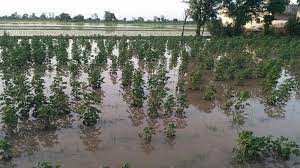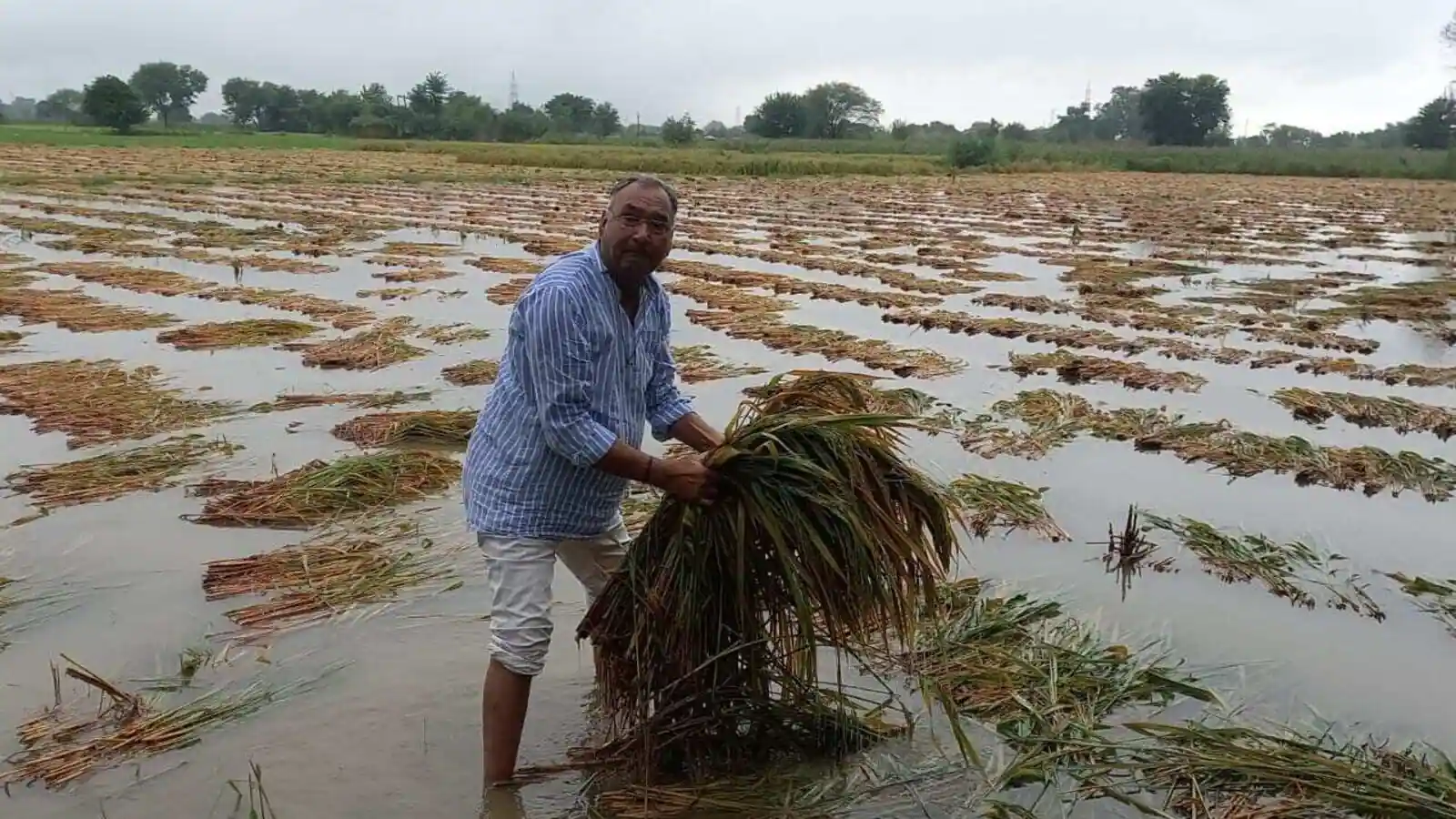
Chennai, Sept 2 (BPNS)
Incessant and untimely rains in Tamil Nadu has affected the Cotton and Maize cultivation in the state. In Permbalur district of the state, a stream breach has led to the total destruction of more than 100 acres of Cotton and Maize cultivation.
At Keezha Permbalur in Veppur Union of Permbalur district, rainwater seeped into agricultural fields after a 30 metres wide stream shrunk leading to water overflow and subsequent inundation of crops.
M. Parasuraman, a farmer of Cotton in Perambalur while speaking to BPNS said, “ This is not a single instance, streams and lakes get shrunk with Seemai Karuvilan trees invading into the streams and occupies the space. Here also the stream was six metres wide but is now only 3 metres in width and hence the water overflow. Unless the government and the water resources and agriculture departments don’t take pre- monsoon preparations, these things are bound to happen and ultimately it is people like us who are suffering. My five acres of Cotton farms is entirely lost.”
For the past few days heavy rains have been lashing many parts of Tamil Nadu and this has led to the water inundation and subsequent loss of crops. Maize and Cotton farmers are more affected as during this period of the year, these crops are in prominence in the state.
While 100 acres of Cotton and Maize farming are lost due to the inundation in Permabalur, in other districts of the state including Salem, Erode and Tiruchi, where Cotton and Maize are cultivated in huge volumes, more than 1000 acres of Cotton and Maize crops are destroyed.
With rains continuing to lash in the state, there are possibilities of more crops facing destruction leading to woes to the farming community of the state.
A senior officer with the Tamil Nadu Agriculture department while speaking to BPNS said, “ We have already prepared a proposal on pre- monsoon maintenance of streams and lakes and also proper maintenance of drainages across the state, so that water is flowing properly. However, all our calculations went awry, as the rains had come much earlier than the monsoon time.”









